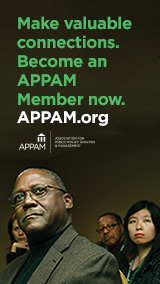Poster Paper:
State-Level Variation in Ccdf Subsidy Policies and Maternal Employment in Low-Income Families
*Names in bold indicate Presenter
In this project, we examine how one specific policy characteristic, the percentage of CCDF funds allocated to certificates as opposed to contracts, is associated with the number of hours mothers work and whether or not they work non-standard work hours. Certificates, also referred to as vouchers, are issued directly to families and allow them flexibility in choosing their childcare provider. Contracts are issued directly to childcare providers who then apply them to families. We hypothesize that use of higher proportion of funds for certificates at a state-level will be associated with more maternal employment and nonstandard work at the individual-level. The greater flexibility inherent in certificates may allow families to choose childcare settings that are more conducive to their employment needs (i.e., are close to home or work, are open during evening hours).
To test these hypotheses, we merged administrative data, available through the Administration for Children and Families website, with the age 3 wave of the Fragile Families Child and Well-Being Study (FFCW), a longitudinal birth cohort study of 4,898 children born between 1998 and 2000 in 20 U.S. cities. By design, FFCW oversampled children born to unmarried parents. Our focal predictor, from the administrative data, is the proportion of CCDF funds allocated to certificates. Our focal outcomes are maternal hours worked and whether mothers worked a non-standard work schedule. We include a wide range of SES, demographic, and health covariates.
We use hierarchical linear modeling to account for nesting of families within states and examined effects of the policies at the state level. Our results support both of our hypotheses. Specifically, in states that allocate a higher proportion of CCDF funds to certificates, FFCW mothers report working more hours (b=2.86; SE=.96). Additionally, higher proportions are also associated with a greater likelihood of engagement in non-standard work hours (b=.81; SE=.32). Our discussion of results will focus on the potential trade-offs between employment concerns and child care quality, as this is a primary argument for the use of contracts as opposed to certificates.













